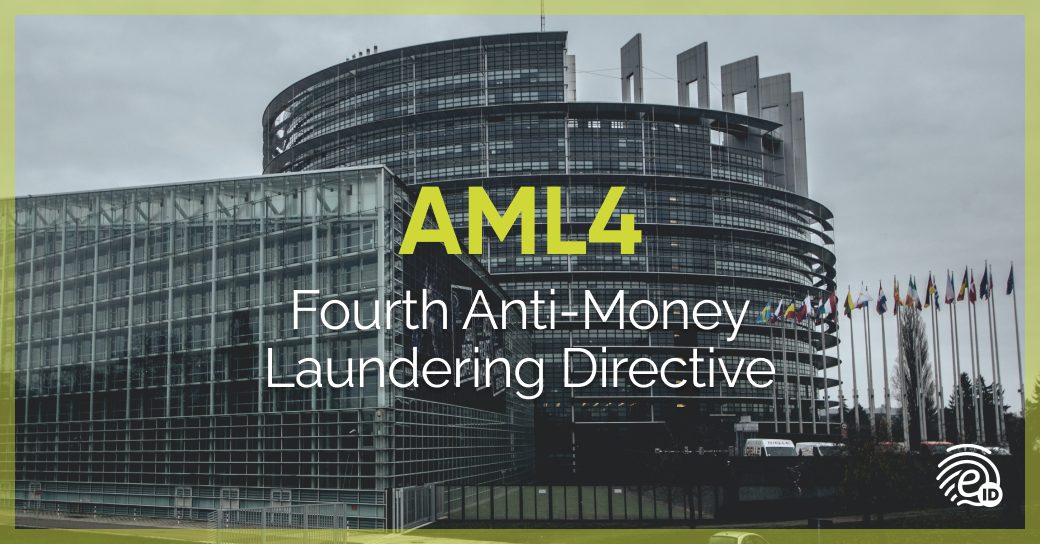AML4 or 4AMLD was a crucial and definitive boost to the fight against money laundering. Similarly, this money laundering directive set the foundation for the current AML5 and the future AML6.
Although the current AML5 and the future AML6 take centre stage within the regulations for the prevention of money laundering and against the financing of terrorism, it is important to understand AML4 and its impact on the way compliance departments face regulatory, administrative and RegTech challenges.
Download here for free our complete guide on the current AML5.
Getting to know the money laundering directives
If you are a compliance professional or if you work in any department of a company in the financial, banking, investment, insurance or related sectors, you are probably familiar with the AML (Anti-Money Laundering) concept.
This concept is crucial and responds to a series of technical and regulatory controls that must be carried out in order to establish a relationship of security, trust and guarantees between a client or user and an organization, company or institution.
Over time, it has not only become a mandatory requirement at the legal level, but we can see how it has been fully integrated into all company operations, endowing them with a series of benefits and advantages previously unknown.
This standardization and adoption by economic actors of AML regulations is closely linked to KYC (Know Your Customer) procedures. In this process, it is where we can see that the relevant AML controls are established, such as in AML4 Anti-Money Laundering Directive.
Schedule an appointment here and access 508 million consumers thanks to the European standardization of customer onboarding.
The Fourth Anti-Money Laundering Directive
AML4, or 4AMLD (2015/849), was approved in May 2015 by the European Commission. It introduced a series of important changes regarding what had been done in AML matters years ago. The following stand out:
- Procedures were established to reinforce the sanction capacities of the agencies.
- Risk assessment guidelines for the banking, law, accounting, and related sectors were established.
- A series of guidelines with respect to other states in which the regulation in this matter is less was developed, allowing the global expansion of businesses and entities.
Thus, AML4, the fourth money laundering directive, was the starting point and laid the foundations for the revolution to come with its successor AML5.
AML5, the successor and current
AML5, or 5AMLD, was introduced in 2018 as the fifth money laundering directive. This regulation would transform all sectors, allowing companies to access 508 million citizens to whom they could provide their services and sell their products in a simple and scalable way.
The market was standardized in such a way that acquiring clients completely remotely is totally possible as long as this procedure is carried out under a specific process and in compliance with the specified requirements in the money laundering directive.
The fifth money laundering directive also introduced important changes such as:
- The inclusion in AML obligations for cryptocurrency exchanges, trading platforms and other types of online businesses.
- The definition of identification and identity verification methods of users, both for the offline and online contexts.
Together with eIDAS (electronic IDentification, Authentication and trust Services), AML5 and its regulatory and technical framework make business expansion possible. Especially those within the financial sector, who must comply with a series of more specific and delicate regulatory guidelines.
The future of anti-money laundering directives
AML6, or 6AMLD, is the standard developed during 2020 and represents an additional step over its predecessor. It advances and expands what has already been defined in the fifth money laundering directive, but it also specifically specifies the sanctions so as there is no space for doubts in the application of the jurisdiction.
Find out in this article all the details about 6AMLD and its application periods.
Since the launch of AML4, the landscape regarding money laundering regulations and security around customer acquisition has revolutionized the economy and all sectors of activity.
Since then, regulations such as PSD2 (Payment Services Directive 2) and SCA (Strong Customer Authentication) have also been promoted complementing directives such as AML4 so that businesses can expand and develop through the internet and without borders in a safe and secure way.
eID, consolidated RegTech and AML partner
Electronic IDentification (eID), as a recognized and consolidated RegTech partner, accompanies its clients in their AML and process digitization needs. With extensive experience in the FinTech sector, eID has managed to reduce costs and drive growth both in first-rate companies and in small and medium-sized companies thanks to the various Anti-Monwy Laundering Directives: AML4, AML5 and AML6.
Companies in any industry, but especially in the financial sector, can boost their customer acquisition exponentially thanks to our Video IDentification, Authentication and Electronic Signature solutions.
Contact Electronic IDentification through this form and an expert will assess the needs of your organization.



